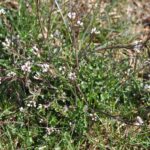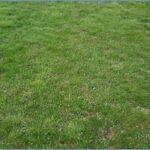Table of Contents
ToggleLast Updated on April 13, 2025
With over 30 years of experience in lawn care, I can say without question the most common misconception is that broadleaf weeds are preventable. There is nothing that makes customers more frustrated than seeing broadleaf weeds in a lawn they are paying to have maintained. So why do broadleaf weeds pop up in maintained lawns from time to time?
The Grand Illusion
If you search the internet, you may find a few products labeled for preventatively controlling broadleaf weeds. However, these products are not practical for residential lawn use, and are generally not included as part of any normal maintenance program. Instead, maintenance programs typically utilize control products that are applied to the foliage and stems of existing broadleaf weeds which the plants absorb into their roots. When done often enough in combination with regular fertilization, the combined regimen will discourage broadleaf weed growth while promoting the dense growth of desirable turf grasses. Because the weeds are almost never allowed to outgrow the grass, it appears to the homeowner as though the weeds are being prevented.
Hairy Bittercress
In the early part of each spring, customers call in waves about a weed with little white flowers popping up all over the lawn. Comments about how they’ve “never seen this weed before”, or that it “wasn’t there last year” are common. So why is this particular weed such an issue each spring worth writing about? To answer that question, we need to rewind a bit.
Hairy bittercress is a winter annual that starts growing in fall as a small, low-growing weed. The plant develops as a basal rosette (like the dandelion), with leaves that are round to kidney shaped, the largest of which can be found at the end of the stems. The plants remain smaller at this phase and are only slightly more obvious when they occur in mulch beds or any place where grass is not present. As more bittercress continues to germinate into November, regular weed control treatments stop. In addition, the grass starts to slip into winter dormancy which slows stem and leaf growth dramatically.
With the grass dormant for the winter, and no winter weed control applications taking place, the hairy bittercress continues to mature off and on through the colder weather. If the winter is snow covered for extensive periods, the maturation of this weed is very slow. Years with winters like this are when homeowners are less likely to take note of this weed in their lawns, because it does not have the opportunity to bloom before their initial weed control treatments are applied. However, in years where the winter is not as cold and there is almost no snow/ice cover, the hairy bittercress matures quickly and goes into bloom much sooner than initial treatments can be applied and well before any lawn mower is even pulled out of its shed. The white flowers sprout atop 3-9” stems and any homeowner can spot this winter invader with just a brief observation being made of the lawn from their front door.
What to do?
First, don’t panic. Second, call your lawn care provider and explain that there is hairy bittercress growing in the lawn. They will send out a technician to provide your initial treatment of the spring, which should include broadleaf weed control. For all of the concern raised by the presence of this pest, it is actually very easy to control with a single application of broadleaf weed control.
Hairy bittercress plants can be easily plucked from the lawn from the base of the stem if herbicide use is not desired. It is an annual, so any plants missed will die as it gets warmer; however, if pulling weeds, homeowners should try to get as many as possible before plants go into seed. Hairy bittercress develops very obvious seed pods that form upright along stems. They will actually burst when disturbed and catapult seeds as far as 16 feet! The more plants removed before these structures form, the better.
Conclusion
The best defense against any weed is maintaining a thick, healthy lawn. Seeding whenever necessary to establish dense turf cover will keep weeds from being able to infiltrate the lawn. Proper fertilizer applications done regularly throughout the year should also help to promote desirable turf growth which will further crowd out unwanted weeds.
If you have any questions about hairy bittercress and controlling it, please give our office a call at 908-281-7888 or request a free estimate online.



